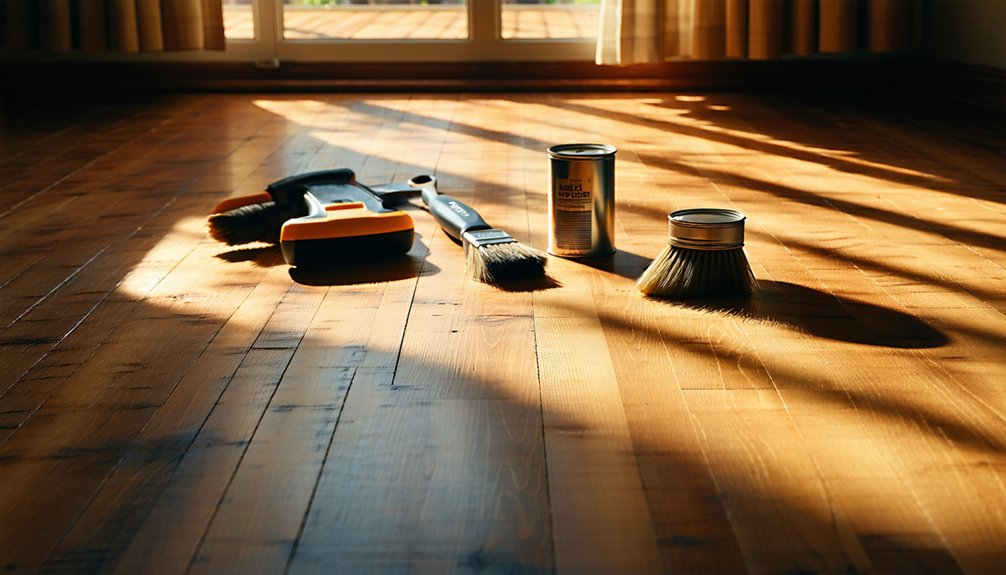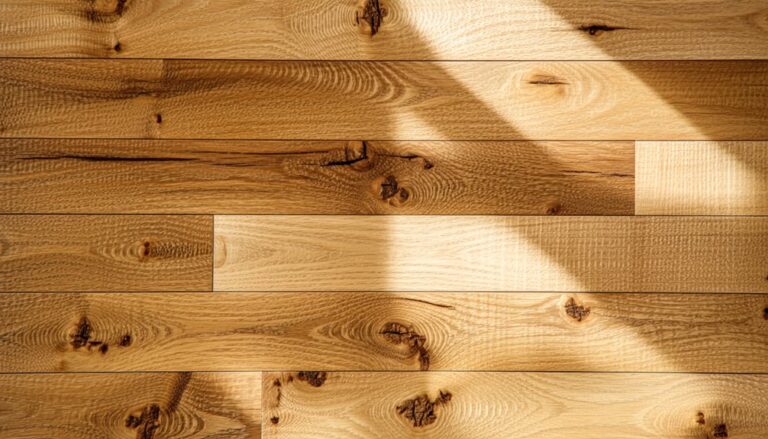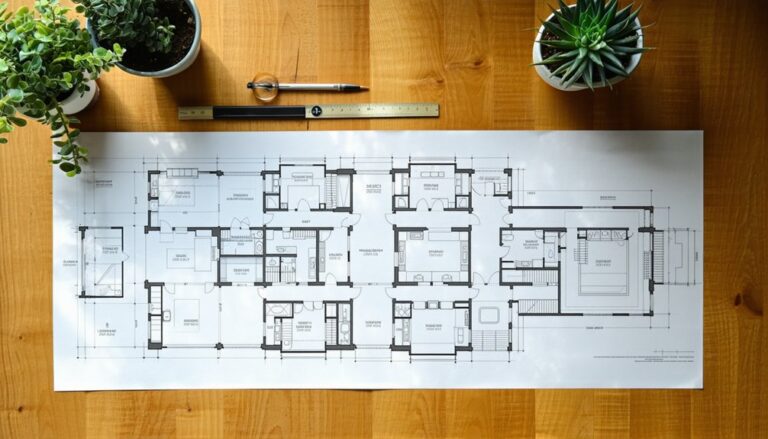Refinishing wood floors generally runs between $3 to $7 per square foot. This price varies based on several factors, including the wood type, the finish you choose, and the complexity of the project. Labor costs will usually fall between $2 and $4 per square foot, while preparation, such as sanding or repairs, adds another $0.50 to $1. If you're considering a DIY approach, you can save on labor but may face challenges like achieving an even finish. Understanding these variables can help you budget effectively. There's more to explore about maximizing your refinishing project's value.
Factoren die de kosten beïnvloeden
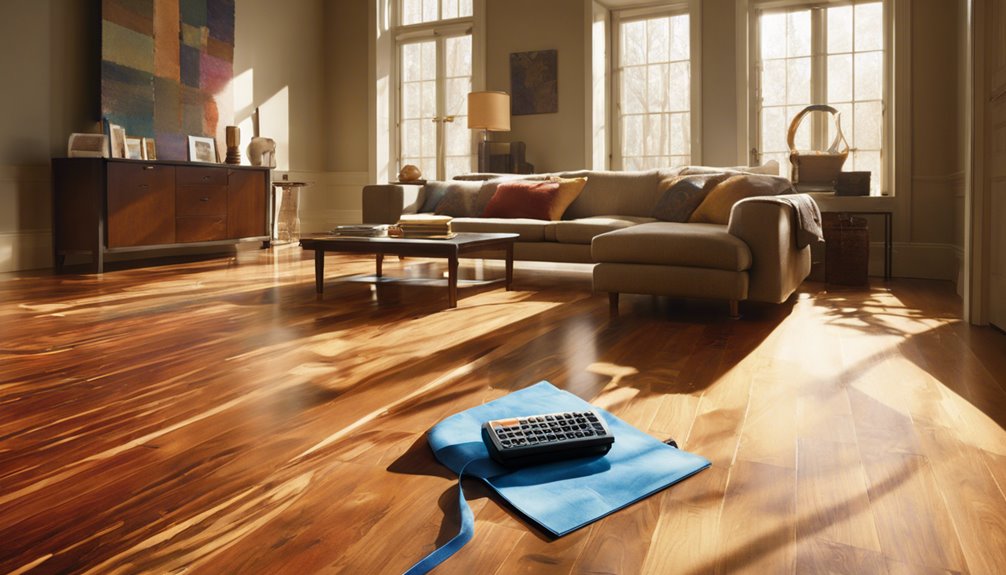
When considering the cost to refinish wood floors, several key factors come into play that can greatly influence the final price. First, the wood species you have matters; harder woods like oak or maple typically require more labor and time to refinish than softer woods like pine. This can affect both the complexity and duration of the project. Additionally, the finish type you choose markedly impacts costs. For instance, oil-based finishes tend to be more durable and often come with a higher price tag compared to water-based options. Each choice you make regarding wood species and finish type contributes to the overall expense, so it's essential to weigh these factors carefully to guarantee your project aligns with your budget and aesthetic goals.
Average Cost Breakdown
Understanding the average cost breakdown for refinishing wood floors can help you plan your budget effectively. Here's a quick look at the typical expenses involved:
- Arbeidskosten: Professionals usually charge between $2 to $4 per square foot, depending on your location.
- Flooring Materials: The type of wood and finish you choose can greatly affect your total cost; higher-end finishes may add $1 to $3 per square foot.
- Preparation Costs: You might spend an additional $0.50 to $1 per square foot for sanding and repairs.
- Sealing Products: Quality sealers generally range from $0.50 to $2 per square foot.
DIY vs. Professional Services
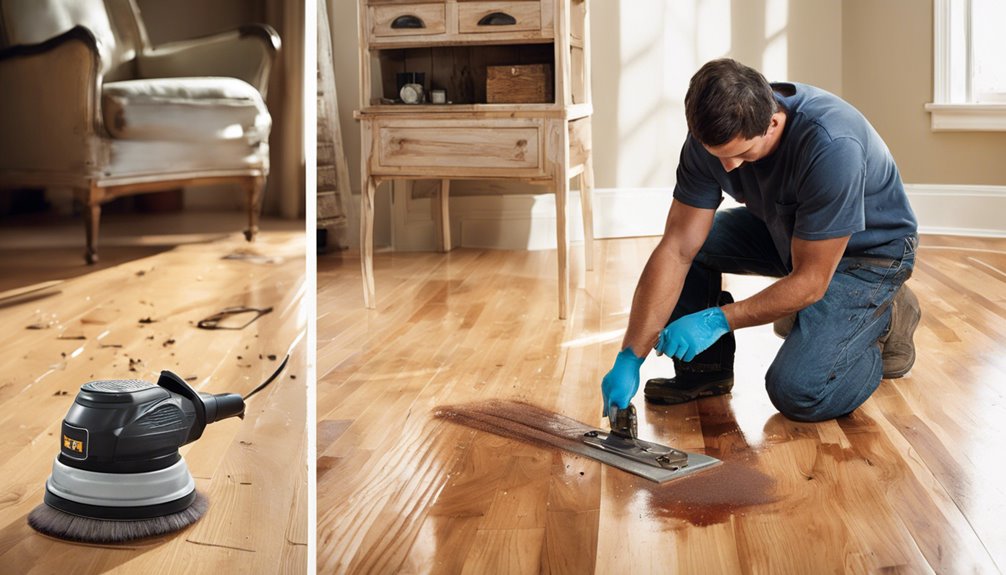
How do you decide between tackling a wood vloer refinishing project yourself or hiring a professional? If you're drawn to DIY techniques, you'll appreciate the satisfaction and potential cost savings of completing the job on your own. However, refinishing wood floors requires specific tools and skills, and you might face challenges like achieving an even finish or managing dust control. On the other hand, professional advantages include expertise, access to high-quality equipment, and time savings. Pros can also handle unexpected issues that arise during the project, ensuring a smoother process. Ultimately, your choice hinges on your skill level, budget, and how much time you're willing to invest in this rewarding endeavor.
Additional Expenses to Consider
Choosing between DIY and hiring a professional for your wood floor refinishing project is just the beginning; there are other financial aspects to keep in mind. Beyond labor costs, you need to take into account additional expenses that can add up quickly. Here are four key items to think about:
- Additional materials: Stains, sealants, and finishes can greatly impact your budget.
- Floor preparation: This may involve sanding, cleaning, or repairing, all of which require specific tools or services.
- Renting equipment: If you go the DIY route, renting sanders or buffers can be pricey.
- Disposal fees: Don't forget about the costs associated with disposing of old flooring materials.
Planning for these expenses will help you avoid surprises and guarantee a smooth refinishing process.
Tips for Cost Savings
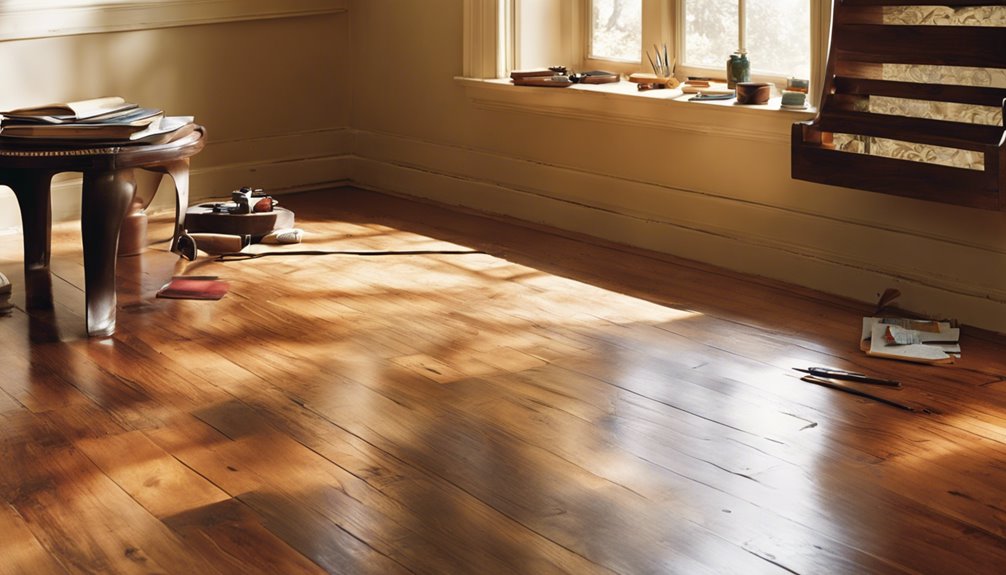
While refinishing wood floors can be a significant investment, there are several strategies you can employ to cut costs without sacrificing quality. First, consider DIY sanding techniques to save on labor costs. You can rent equipment and learn the process online, which empowers you to manage the project effectively. Additionally, choosing budget-friendly stain options can also reduce expenses; opt for a clear finish to showcase the wood's natural beauty instead of a colored stain.
Here's a simple table for quick reference on cost-saving methods:
| Strategy | Beschrijving | Potential Savings |
|---|---|---|
| DIY Sanding | Rent sanders and do it yourself | Up to 50% |
| Clear Finish | Use a clear coat instead of a stain | 20-30% |
| Bulk Material Buy | Purchase materials in bulk | 10-15% |
| Seasonal Discounts | Look for off-season deals | 15-25% |
| Local Suppliers | Compare local prices | 5-10% |
Veelgestelde vragen
How Long Does the Refinishing Process Usually Take?
The refinishing duration typically ranges from a few days to a week, depending on factors like the size of the area and the condition of the floors. You'll want to factor in time for sanding, staining, and sealing. A well-planned project timeline can help guarantee everything runs smoothly. If you're looking to minimize disruption, consider scheduling around your daily routines for a seamless experience while your floors are being revitalized.
Can I Refinish My Floors if They Have Deep Scratches?
Imagine your wooden floors like a well-loved book, each deep scratch a story etched into its pages. You can absolutely refinish your floors even with those deep scratches, but it might require some extra effort. DIY refinishing can help, but you'll need to sand the scratches down before applying a new finish. Just remember, if the damage is too severe, it might be worth consulting a professional for the best results.
What Types of Wood Floors Can Be Refinished?
You can refinish several types of wood floors, primarily solid hardwood and engineered wood. Solid hardwood is ideal for refinishing due to its thickness, allowing for multiple sanding cycles. Engineered wood, while more limited, can still be refinished if it has a sufficient wear layer. It is crucial to assess the condition of your floors to determine their suitability. Refinishing can breathe new life into your space, giving you the freedom to update your home's aesthetic.
How Often Should I Refinish My Wood Floors?
If your wood floors could talk, they'd probably ask for a little TLC every few years! Ideally, you should refinish your floors every 7 to 10 years, depending on foot traffic and wear. Regular floor maintenance can extend this timeline, but you'll notice signs like scratches and dullness that signal it's time. Staying on top of refinishing frequency guarantees your floors remain beautiful and durable, giving you the freedom to enjoy your space worry-free.
Will Refinishing My Floors Increase My Home's Value?
Refinishing your floors can greatly boost your home value and resale potential. Freshly refinished wood floors create a lasting impression, appealing to prospective buyers. They see well-maintained floors as a sign of overall home care, often leading to higher offers. Plus, refinishing enhances the aesthetic appeal of your space, making it feel more inviting. So, if you're looking to maximize your investment, refinishing is a smart move that pays off in the long run.

